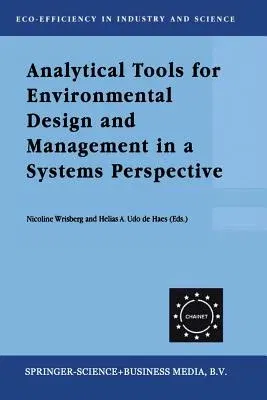The aim of this book is to link demand and supply of environmental
information in the field of Life Cycle Management. The book is based on
the results of the CHAINET concerted action financed by EU-DGXII for the
work period 1998-2000, and is intended to build bridges between the
different scientific communities in the field of Life Cycle Management.
A structured approach is followed, meaning that both demand and supply
of environmental information are characterised, after which the two are
linked.
Chapter 2 deals with the demand side; a number of characteristics are
identified including the object of analysis, different question types,
consecutive decision steps, and the cultural context of the decision at
hand. Chapter 3 gives an overview of the supply side, distinguishing
between concepts, analytical tools, procedural tools, technical
elements, and data. The focus of the book is on analytical tools. In
Chapter 4 and in a 34-page annex, eleven analytical tools are
systematically described, including LCA, MIPS, ERA, MFA, SFA, CERA, IOA,
analytical tools for ecodesign, LCC, TCA, and CBA.
In Chapter 5, demand and supply are linked, starting from the question
types and indicating which types of tools are particularly suited for
which type of question. For instance, it is shown that LCA is
particularly useful for operational questions, but less so for more
strategic questions. Other aspects concern the distinction between a
broad overview and a detailed analysis, and, interestingly, the cultural
context of the decision. It appears that without agreement on the
criteria to be used, quantitative analytical tools such as LCA, ERA, or
CBA may not be very helpful as support for decision-making. Rather more
robust quantitative, or even qualitative, tools may then be used
instead.
Chapter 6 makes a number of concluding remarks. A plea is made for the
combined use of tools, rather than the development of a super tool.
Another important topic concerns the customisation of tools, which is
seen as quite useful if combined with a periodic validation against a
more detailed analysis.
In the text of the preceding chapters, 26 text boxes are included as
practical illustrations of the principles described in the text. In the
following chapters, three cases are presented, dealing with electronic
goods, the car, and clothes washing. These cases show how, in practice,
different tools are used in combination, as a support for a given
decision situation.
The book is particularly suited for courses in higher education, both
for universities and polytechnics, and for use by consultancy firms, by
larger companies, and industrial branch organisations.


